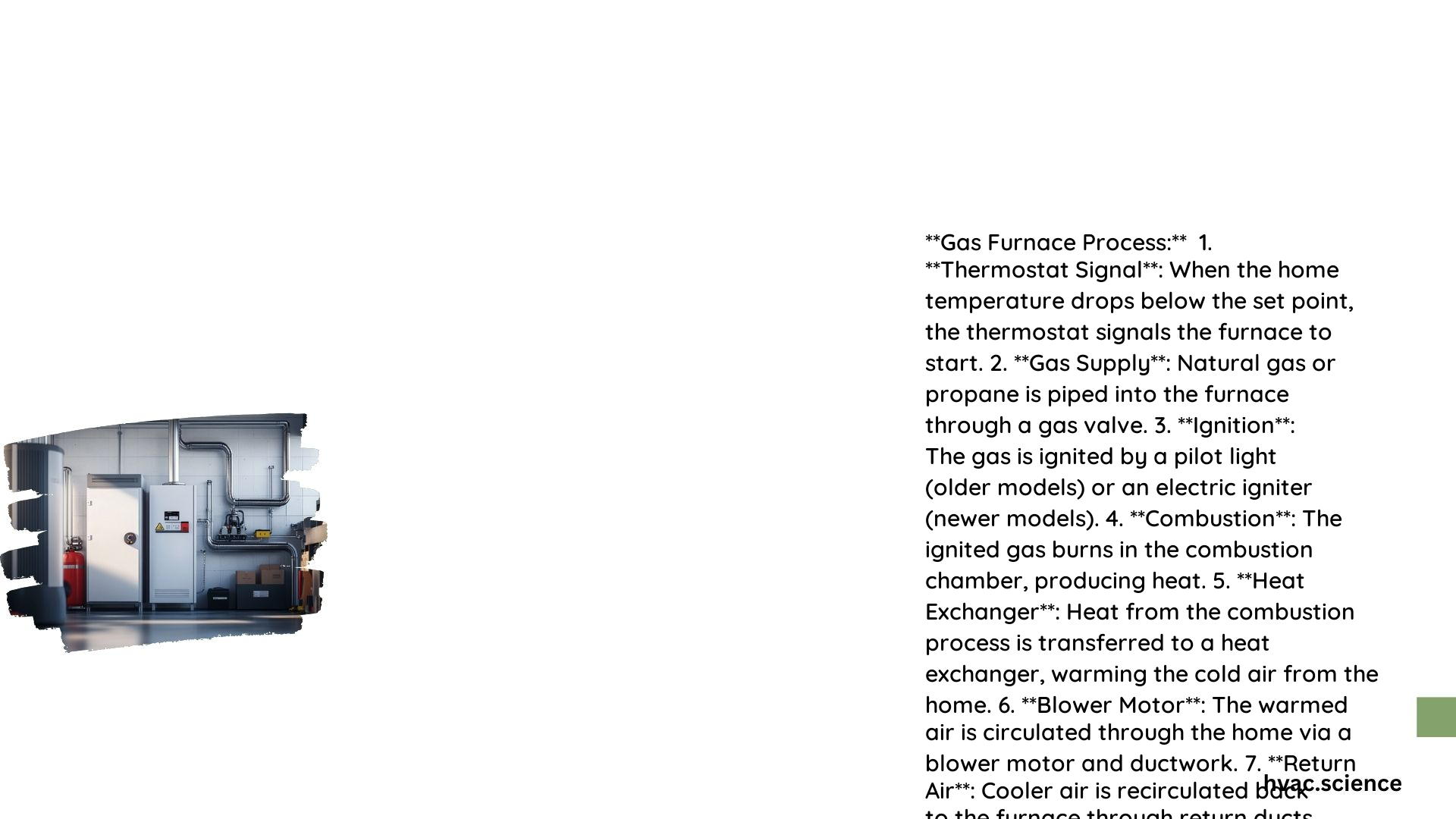Gas Furnace Process: Combustion and Major Components
The gas furnace process involves the combustion of natural gas to generate heat, which is then distributed throughout the home via a blower and ductwork system. Understanding the combustion process and the major components of a gas furnace is crucial for ensuring efficient and safe operation.
What is the Combustion Process in a Gas Furnace?
The combustion process in a gas furnace requires three essential elements: fuel (natural gas), heat, and oxygen. The process begins with the ignition system, which ignites the gas, creating a flame. The gas valve then opens, allowing the gas to flow to the burners, where it mixes with combustion air and is ignited, producing a continuous flame. This combustion process generates heat, which is then transferred to the air circulating through the furnace’s heat exchanger. The heated air is then distributed throughout the house via the ductwork.
What are the Major Components of a Gas Furnace?
- Burners: Deliver and burn the fuel, with valves that control the gas flow.
- Heat Exchanger: A sealed chamber where the combustion process occurs, transferring heat from the combustion gases to the circulating air.
- Blower: Circulates the heated air through the ductwork and distributes it throughout the house.
- Flue: Vents the exhaust gases from the combustion process outside the house.
- Ignition System: Includes the igniter and gas valve, with the igniter creating the flame and the gas valve controlling the gas flow.
- Thermostat and Temperature Control: Regulate the temperature by signaling the furnace to turn on or off based on the set temperature.
How Does a Gas Furnace Maintain Consistent Temperature?
Maintaining consistent temperature in a home is achieved through several mechanisms:
- Thermostat Control: The thermostat monitors the house temperature and sends signals to the furnace to adjust the heat output.
- Blower Operation: The blower fan circulates air over the heat exchanger, ensuring consistent heat distribution.
- Combustion Air: Adequate combustion air is crucial for efficient and safe combustion, typically achieved through dedicated combustion air ducts or proper ventilation.
What are the Efficiency Ratings and BTU Output of Gas Furnaces?
- Efficiency Ratings: Gas furnaces are rated based on their Annual Fuel Utilization Efficiency (AFUE), with high-efficiency models achieving AFUE ratings of 90% or higher.
- BTU Output: The BTU (British Thermal Units) output of a gas furnace varies based on the model and size, typically ranging from 40,000 to 100,000 BTU per hour for residential applications.
What Tools and Materials are Used for Gas Furnace Maintenance and Installation?
- Combustion Analyzers: Used to measure oxygen, CO, and flue temperature to ensure proper combustion and safety.
- Thermometers and Pressure Gauges: For monitoring temperature and gas pressure.
- Venting Materials: Specific types of vent pipes are required based on flue gas temperatures and local codes.
- Safety Equipment: Includes items like carbon monoxide detectors and safety switches to prevent gas buildup.
What are the Technical Specifications and Calculations for Gas Furnace Combustion?
- Combustion Air Requirements: For perfect combustion, a 10:1 to 15:1 ratio of air to fuel is required.
- Flue Gas Temperatures: The temperature of the flue gases can indicate the efficiency of the combustion process, with higher oxygen content potentially lowering the flame temperature.
- Heat Exchanger Efficiency: The heat exchanger’s efficiency is crucial for transferring heat from the combustion gases to the circulating air, with high-efficiency furnaces using secondary heat exchangers to extract more heat.
References:
- An Introduction to the Combustion Process – ACHR News [https://www.achrnews.com/articles/131293-an-introduction-to-the-combustion-process]
- How Does a Furnace Work? – Eyman Plumbing Heating & Air [https://trusteyman.com/resources/how-does-a-furnace-work/]
- Combustion Air – HVAC School [https://hvacrschool.com/combustion-air/]

